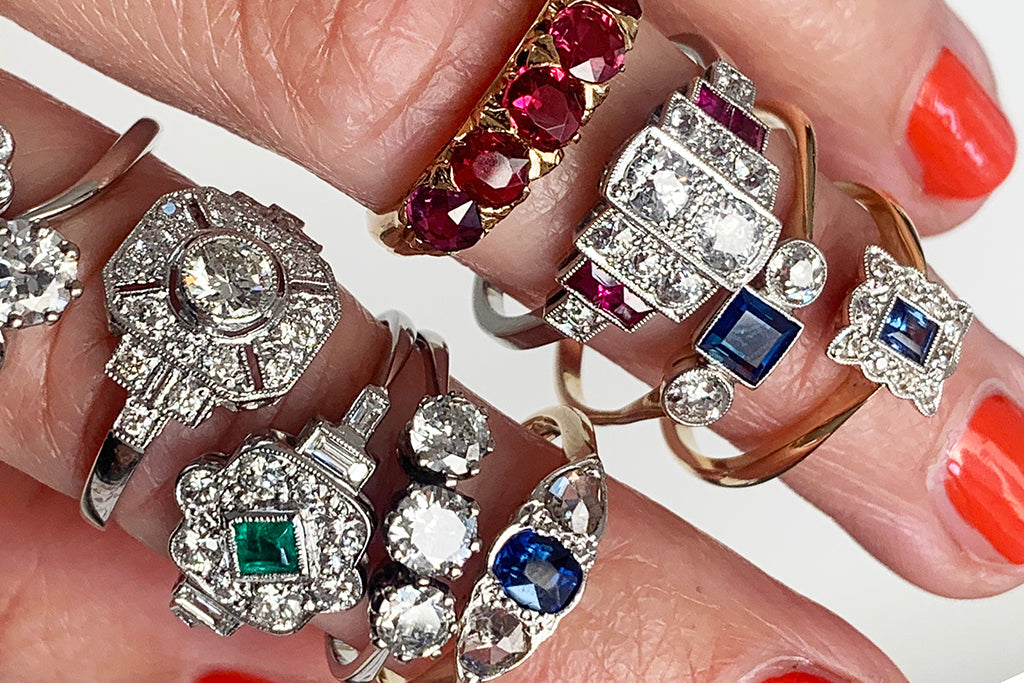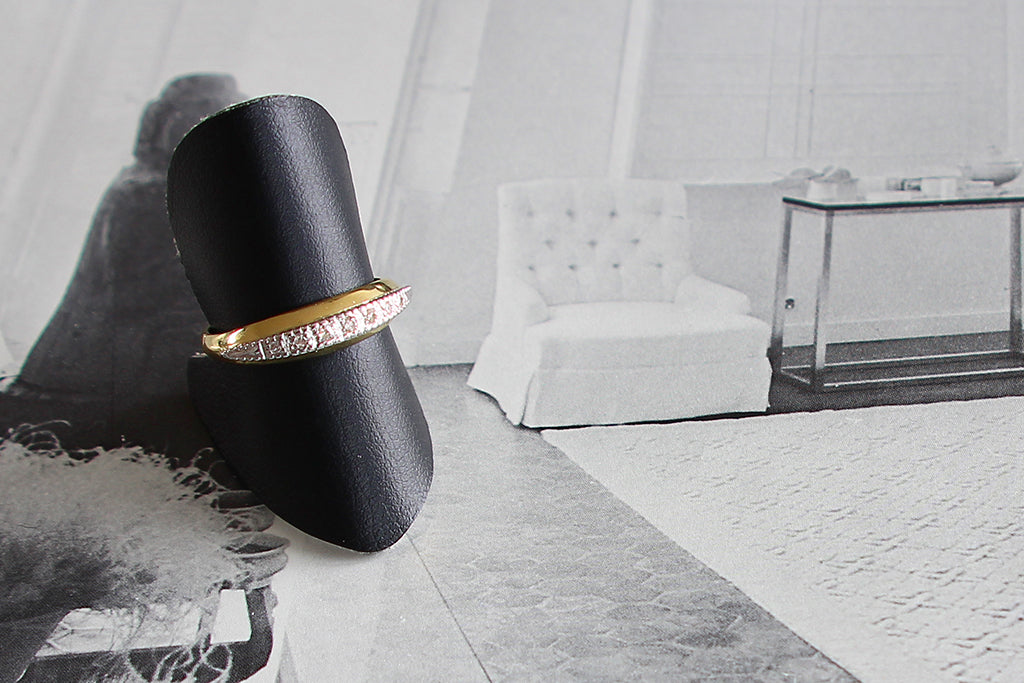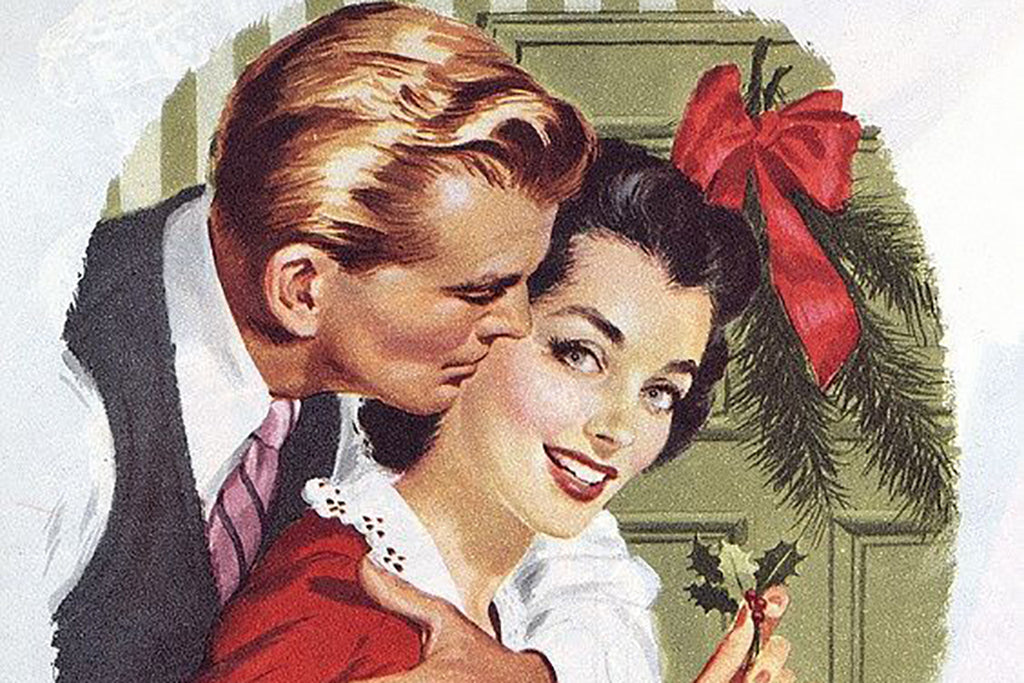
How old is my antique ring?
Perhaps what excites us most about vintage jewellery is the intrigue that surrounds it. Who loved it previously? What did they do, where did they go and who did they meet? Our antique jewels tell myriad stories of lives well lived, but we’ll never know for sure exactly how those tales twisted and turned – the magic is in the mystery.
One riddle we’re always happy to see solved, however, is that concerning age. Understanding how old a vintage ring is can help us to determine its authenticity and value, implement appropriate maintenance and cleaning techniques and ensure genuine antiques are properly accounted for. A tangible connection with the past also affords us fascinating insights into materials and craft techniques of bygone eras.
Whilst it’s rude to ask a lady her age, thankfully old jewellery often bears tell-tale signs that enable us to draw our own conclusions. This blog post will talk you through some of the ways to identify the age of a vintage ring.
HALLMARKS AND MAKER’S MARKS
Our Margot mid-century diamond ring
First, check for hallmarks and a maker’s mark on the inside of your band. These markings may provide information about the jeweller who originally created the piece, its country of origin, and sometimes even the date of manufacture. For example, Nicole’s hallmarks tell us that she was validated at the London Assay Office in 1991. You may be able to decode your ring’s markings relatively easily by way of an app, website or book from your local library. Otherwise, there may be an antique jewellery specialist in your area who could help you out.
METALS AND GEMSTONES
 Bernadette and Mae, platinum toi et moi engagement rings set with old-cut diamonds
Bernadette and Mae, platinum toi et moi engagement rings set with old-cut diamonds
Certain metals and gemstones were more prevalent than others in certain time periods, whilst some gemstone cutting styles are now defunct, replaced by newer variations. Recognising these timestamps, either through research or with the help of an expert, can assist in approximating a window of time.
For example, variations of old cut diamonds enjoyed their heyday from the early 18th century to the late 19th century, cut laboriously by hand and therefore endearingly characterful, organic and varied. When the Industrial Revolution ushered in the steam-powered diamond lathe in the late 1800s, gemstone cuts became standardised and precise, giving rise to the round brilliant cut we know today. Any old cut diamond in circulation nowadays has almost certainly been around for more than 200 years. Recognising the nuanced differences between, say, an old mine cut and an old European cut, is an opportunity to speak in even more specific terms.
Meanwhile, platinum didn’t really gain widespread popularity until the late 19th century, spurred by Queen Victoria’s love for the sturdy white metal and increasing supply from newly discovered deposits in Russia. Though a vintage platinum ring dating back to pre-mid-19th century is not beyond the realms of possibility, you’re unlikely to come across many.
STYLE AND DESIGN
 Ezra, our Edwardian gypsy ring
Ezra, our Edwardian gypsy ring
We love design history here at The Vintage Ring Co., deriving great pleasure from identifying periodic styles and how they reflect the world around them. Though it is of course important to remember that any style can be replicated in a later epoch, if you have a rough idea of when your jewel might date from, the presence of certain design elements may help to solidify that theory.
For example, Queen Victoria’s iconic floral jewellery sets, combined with the Victorian tendency to communicate via the ‘language of flowers’, drove a surge in flowery motifs in the late-19th century; think hand-engraved vines and roses, or daisy-like clusters of gemstones.
Chunky gypsy rings, deep-set with diamonds and gemstones, are also one of the most distinctive products of the Victorian era and the Edwardian period that directly preceded it.
Later, the advent of mass production and rejection of the austerity brought about by WWI fostered playful exaggeration in the Art Deco era, giving rise to loud bursts of colour, amplifying halos, and bold, geometric gemstone cuts that cleverly optimised the relationship between gemstone weight and affordability.
For some in-depth explorations of eras in jewellery design history, check out our blog.
PROVENANCE AND DOCUMENTATION

By its nature, pre-loved jewellery is generally very tricky to trace. However, many reputable second-hand jewellers take the time to have their vintage jewels assessed by a third-party. Here at The Vintage Ring Co., we provide a certificate of authenticity with every ring, guaranteeing that it has been professionally assessed by the The Goldsmiths’ Company. The certificate not only confirms the type of precious metal used, but the size and quality of the gemstones present, the general state of the ring itself, and the era in which it was crafted.



